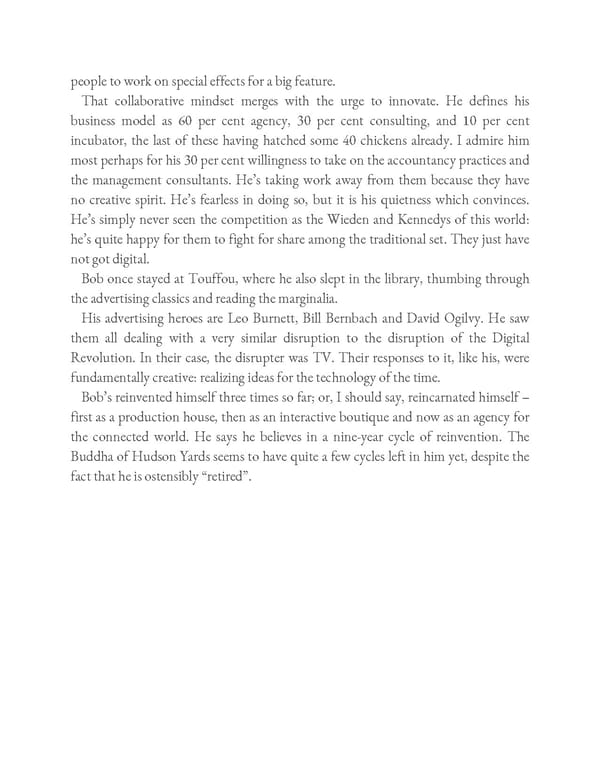people to work on special effects for a big feature. That collaborative mindset merges with the urge to innovate. He defines his business model as 60 per cent agency, 30 per cent consulting, and 10 per cent incubator, the last of these having hatched some 40 chickens already. I admire him most perhaps for his 30 per cent willingness to take on the accountancy practices and the management consultants. He’s taking work away from them because they have no creative spirit. He’s fearless in doing so, but it is his quietness which convinces. He’s simply never seen the competition as the Wieden and Kennedys of this world: he’s quite happy for them to fight for share among the traditional set. They just have not got digital. Bob once stayed at Touffou, where he also slept in the library, thumbing through the advertising classics and reading the marginalia. His advertising heroes are Leo Burnett, Bill Bernbach and David Ogilvy. He saw them all dealing with a very similar disruption to the disruption of the Digital Revolution. In their case, the disrupter was TV. Their responses to it, like his, were fundamentally creative: realizing ideas for the technology of the time. Bob’s reinvented himself three times so far; or, I should say, reincarnated himself – first as a production house, then as an interactive boutique and now as an agency for the connected world. He says he believes in a nine-year cycle of reinvention. The Buddha of Hudson Yards seems to have quite a few cycles left in him yet, despite the fact that he is ostensibly “retired”.
 Ogilvy on Advertising in the Digital Age Page 361 Page 363
Ogilvy on Advertising in the Digital Age Page 361 Page 363